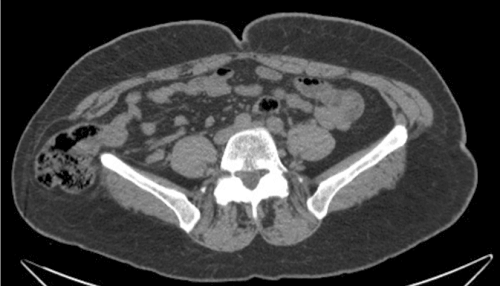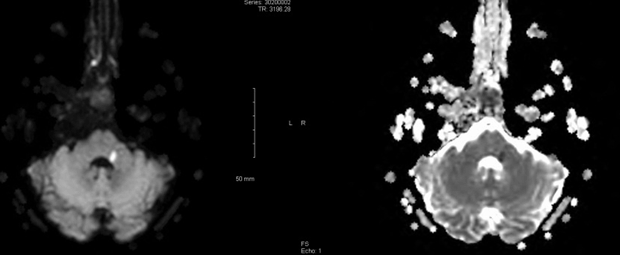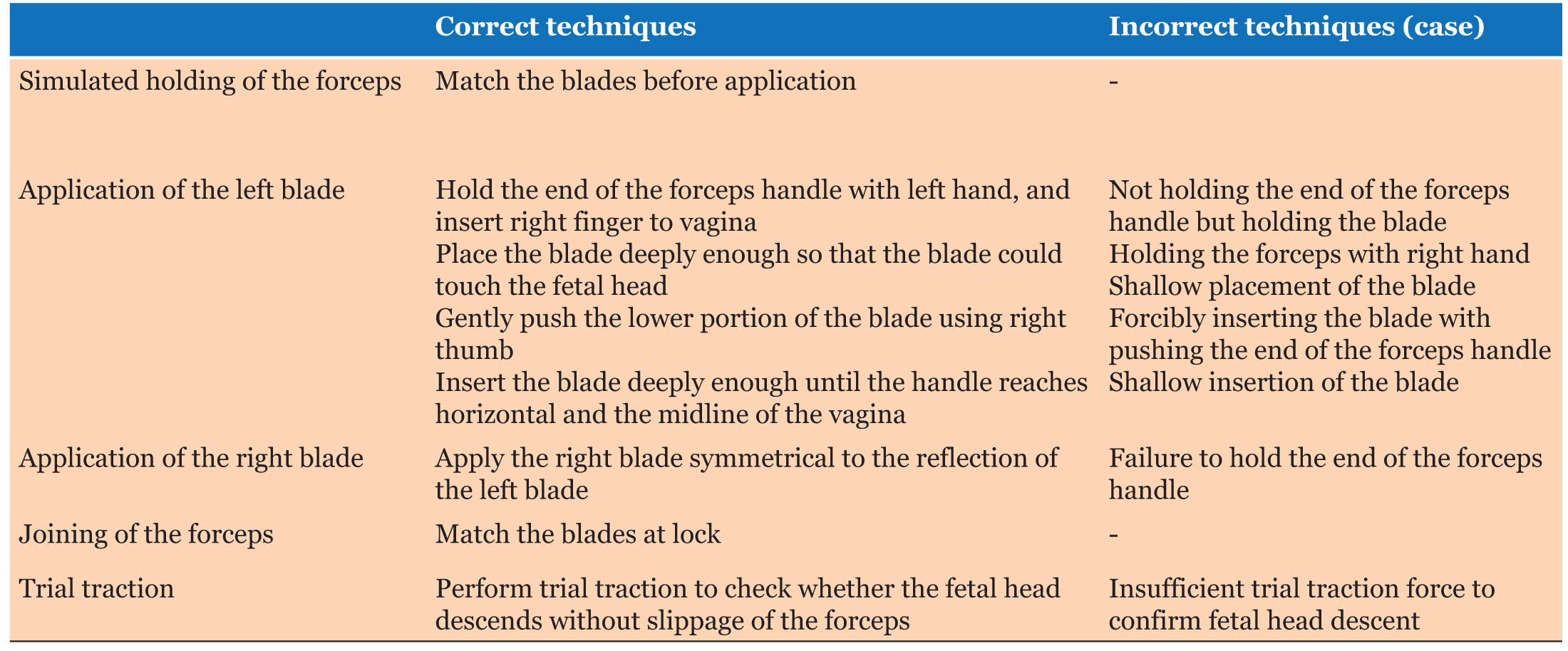Case Report
Ocular flutter as the first sign of a breast carcinoma
1 MD, Assistant resident, Department of Ophthalmology, University Hospitals Leuven, Leuven, Belgium
2 Certified Orthoptist, Department of Ophthalmology, University Hospitals Leuven, Leuven, Belgium
3 MD, Consultant, Department of Ophthalmology, University Hospitals Leuven, Leuven, Belgium
4 MD, Staff member, Department of Neurology, University Hospitals Leuven, Leuven, Belgium
5 Staff member, Department of Ophthalmology, University Hospitals Leuven, Leuven, Belgium
Address correspondence to:
Chlara Maes
Maes Chlara Kapucijnenvoer 35 ,
Pin- 3000, Belgium
Message to Corresponding Author
Article ID: 100001VAM04CM2017
doi: 10.5348/VAM04-2017-1-CR-1
Access full text article on other devices

Access PDF of article on other devices

How to cite this article
Maes C, Janssens H, Goovaerts L, Dieltiens M, Schrooten M, Cassiman C. Ocular flutter as the first sign of a breast carcinoma. Video Journal of Clin Ophthalmol 2017;1:1–4.Abstract
Introduction: Ocular flutter is a rare ophthalmic finding and can be the presenting sign of potentially serious disease. The most common etiology is a paraneoplastic disorder and therefore, a workup for a malignancy should always be initiated.
Case Report: We present a case of a 48-year-old female who presented with a two-month history of progressive anorexia, wasting, vomiting and vertigo and recently associated complaints of diplopia and blurred vision. Ophthalmic examination revealed horizontal saccadic intrusions, consistent with ocular flutter. Further extensive workup revealed an adenocarcinoma of the right breast. Immunologic testing showed positive anti-Ri antibodies which are reported to be associated with breast carcinomas and a paraneoplastic syndrome. The patient underwent local excision and adjuvant chemotherapy, radiotherapy and hormonal therapy were administered. The clinical picture deteriorated rapidly to an overt opsoclonus and a gait disorder. Six months after the initial presentation, she became symptom free.
Conclusion: Ocular flutter is an alarming finding and should always alert the clinician to screen for a potential underlying malignancy.
Keywords: Anti-Ri, Breast carcinoma, Ocular flutter, Opsoclonus, Paraneoplastic syndrome
Introduction
Ocular flutter is a rare oculomotor syndrome and is characterized by horizontal back to back saccades without intersaccadic interval [1]. Opsoclonus shares some of the same properties, but consists of multidirectional saccades. Both can be considered as a part of one spectrum [1]. The most frequent etiology is a paraneoplastic syndrome [2]. Ocular flutter and opsoclonus are always alarming findings and should be recognized in clinical practice as soon as possible [2]. Tumors most frequently associated are lung and breast carcinoma [2][3]. Prompt further investigations, screening for those potential malignancies, should be initiated as soon as soon as possible [4]. Antibodies most frequently associated with breast cancer associated opsoclonus-myoclonus syndrome are anti-Ri antibodies, however they are of limited diagnostic value because most patients are seronegative [5][6]. We present a case of a 48-year old woman who presented with ocular flutter as the initial sign of an underlying breast carcinoma and who recovered completely after treatment.
Case Report
A 48-year old female presented to the department of ophthalmology of our hospital because of disabling complaints of diplopia and blurred vision. She had a two-month history of progressive anorexia, wasting, vomiting and vertigo. She was diagnosed with esophagitis and potential benign paroxysmal positional vertigo during a recent hospitalization. At the initial examination her visual acuity was 20/20 in both eyes. Ocular motility examination revealed intermittent bursts of high-frequency horizontal saccades without an intersaccadic interval, consistent with ocular flutter. Eye movements were full range in all directions and there was a small concomitant esodeviation. Her medical history was unremarkable, except for hypercholesterolemia. She was taking a statin and a proton pump inhibitor and recently cinnarizine, alizapride, trazodone and alprazolam were associated because of her progressive symptoms of anorexia and vertigo, without relief of symptoms. She denied any use of alcohol or drugs. Two weeks before the start of her complaints, she suffered an aspecific infectious episode.
The patient was referred to the department of neurology for urgent further investigation. She was admitted to the emergency department because of significant progression of the ocular flutter with secondary severe visual blur and an unstable gait. Neurologic clinical examination showed brisk osteotendinous reflexes without pathological reflexes and a broad-based ataxic gait. Swallowing was uncoordinated. Video-oculogram confirmed the diagnosis of ocular flutter (Video 1). General biochemical blood tests were normal and screening for (post)infectious disease was negative. Anti-neuronal antibody testing (anti-Hu, anti-Ri, anti-Yo, anti-Ma2, etc.) was positive for anti-Ri-antibodies. Her cerebrospinal fluid (CSF) showed a lymphocytic pleocytosis (8.4/µL; normal <5.0/µL) and twelve oligoclonal bands. Brain MRI scan was normal. Screening with mammography revealed a hypo-echogenic lesion (2.2x1.8x2.0 cm) in the right breast (Figure 1). Core biopsy was suggestive of a moderately differentiated invasive ductal adenocarcinoma. She underwent wide local excision and sentinel node biopsy. Histologic examination confirmed a grade 2 moderately differentiated invasive ductal adenocarcinoma (Figure 2). Three sentinel nodes were negative. Final staging was pT2N0M0. Adjuvant treatment with chemotherapy (Four cycles of epirubicin and cyclophosphamide followed by 12 cycles of taxotere), radiotherapy and hormonal therapy (tamoxifen) was initiated. Immunotherapy treatment with plasmapheresis, steroids and azathioprine were successively started because the ocular flutter was severely disabling.
Gabapentin and clonazepam were also tried in association. Despite treatment, there was initial progression of the clinical image. The eye movements evolved into an overt opsoclonus (Video 2) with multidirectional saccades. She continued to experience severe oscillopsia, making her functionally blind with a binocular visual acuity of 20/200. The ataxia progressed to an incapability to walk and made here wheelchair dependent. She mentioned infrequent shock-like movements of arms and head, reminiscent of myoclonus. Six months after the initial presentation, contemporaneously with the chemotherapy, her symptoms disappeared slowly and in two months she became completely symptom free, apart from a mild peripheral neuropathy, likely treatment induced
Access video on other devices
Discussion
Ocular flutter is part of the spectrum of saccadic intrusions without intersaccadic interval. It consists of back-to-back saccades in the horizontal plane. Opsoclonus shares some of the same properties, but consists of multidirectional saccades. It usually occurs in association with myoclonus and ataxia [1]. They both can be considered as part of one spectrum with the same etiology, pathophysiology and clinical implications [1]. Ocular flutter and opsoclonus are always alarming findings and require prompt further investigation. The most common etiology in adults is a paraneoplastic syndrome [2]. In our case, the presenting sign of ocular flutter heralded the diagnosis of a breast carcinoma which, together with lung tumors, is most frequently associated with a paraneoplastic syndrome [2]. In children, neuroblastoma has to be ruled out [2][3]. The exact pathophysiology remains unknown, but the underlying mechanism is presumed to be an auto-immune mediated response. Cerebrospinal fluid analysis may show pleocytosis and protein elevation, as in our case [3] [4]. Auto-antibodies may be detected in a small percentage of cases, but are of limited diagnostic value because most patients are seronegative [3] [4][5]. A recent review showed that onconeuronal antibodies were positive in only 11% of cases [6]. In our case, anti-Ri antibodies were positive. They are associated with opsoclonus-myoclonus syndrome and are reported to be associated with gynecological and small cell lung cancer, but are mostly associated with breast carcinoma [5]. Symptoms associated with this syndrome are frequently very disabling and may sometimes precede the diagnosis for several months or years [5]. Most frequent initial symptoms include acute vertigo, nausea and vomiting, gait instability and vision abnormalities [6][7]. The primary treatment should always consist of treating the underlying malignancy as soon as possible. Further treatment options include immunosuppressive therapies such as corticosteroids, azathioprine and plasmapheresis [2][4][5]. Also anticonvulsants have proven to be effective [2][4][5]. In general, paraneoplastic ocular flutter and opsoclonus have a more severe course than the idiopathic form and the majority of patients recover only partiallly [3][6][7][8]. Evolution into severe encephalopathy and coma can occur if immunotherapy is not associated with primary tumor treatment [3][6][7][8]. In our case, the patient did not respond to immunosuppressive or supportive medical treatment and there was initially progression of the clinical image. Eventually, after the initiation of chemotherapy complete regression of the ocular flutter and ataxia were established despite a mild peripheral neuropathy.
Conclusion
We report a case of ocular flutter as the presenting sign of a breast carcinoma. Ocular flutter is a rare, but alarming finding and should alert the clinician to screen for a potential underlying malignancy.
References
1.
Lemos J, Eggenberger E. Saccadic intrusions: Review and update. Curr Opin Neurol 2013 Feb;26(1):59–66. [CrossRef]
[Pubmed]

2.
Kruger JM, Yonekawa Y, Skidd P, Cestari DM. Ocular flutter as the presenting sign of lung adenocarcinoma. Digit J Ophthalmol 2014 Jan 17;20(1):4–6. [CrossRef]
[Pubmed]

3.
Wong A. An update on opsoclonus. Curr Opin Neurol 2007 Feb;20(1):25–31. [CrossRef]
[Pubmed]

4.
Vedeler CA, Antoine JC, Giometto B, et al. Management of paraneoplastic neurological syndromes: Report of an EFNS Task Force. Eur J Neurol 2006 Jul;13(7):682–90. [CrossRef]
[Pubmed]

5.
Weizman DA, Leong WL. Anti-Ri antibody opsoclonus-myoclonus syndrome and breast cancer: A case report and a review of the literature. J Surg Oncol 2004 Sep 1;87(3):143–5. [CrossRef]
[Pubmed]

6.
Armangué T, Sabater L, Torres-Vega E, et al. Clinical and immunological features of opsoclonus-myoclonus Syndrome in the era of neuronal cell surface antibodies. JAMA Neurol 2016 Apr;73(4):417–24. [CrossRef]
[Pubmed]

7.
Klaas JP, Ahlskog JE, Pittock SJ, et al. Adult-onset opsoclonus-myoclonus syndrome. Arch Neurol 2012 Dec;69(12):1598–607. [CrossRef]
[Pubmed]

8.
Bataller L, Graus F, Saiz A, Vilchez JJ. Clinical outcome in adult onset idiopathic or paraneoplastic opsoclonus-myoclonus. Brain 2001 Feb;124(Pt 2):437–43. [CrossRef]
[Pubmed]

Supporting Information
Author Contributions:
Chlara Maes - Substantial contributions to conception and design, Acquisition of data, Analysis of data, Interpretation of data, Drafting the article, Revising it critically for important intellectual content, Final approval of the version to be published
Hilde Janssens - Substantial contributions to conception and design, Acquisition of data, Analysis of data, Interpretation of data, Drafting the article, Revising it critically for important intellectual content, Final approval of the version to be published
Lies Goovaerts - Substantial contributions to conception and design, Acquisition of data, Analysis of data, Interpretation of data, Drafting the article, Revising it critically for important intellectual content, Final approval of the version to be published
Maria Dieltiens - Substantial contributions to conception and design, Acquisition of data, Analysis of data, Interpretation of data, Drafting the article, Revising it critically for important intellectual content, Final approval of the version to be published
Maarten Schrooten - Substantial contributions to conception and design, Acquisition of data, Analysis of data, Interpretation of data, Drafting the article, Revising it critically for important intellectual content, Final approval of the version to be published
Catherine Cassiman - Substantial contributions to conception and design, Acquisition of data, Analysis of data, Interpretation of data, Drafting the article, Revising it critically for important intellectual content, Final approval of the version to be published
Competing Interests:Authors declare no conflict of interest.







